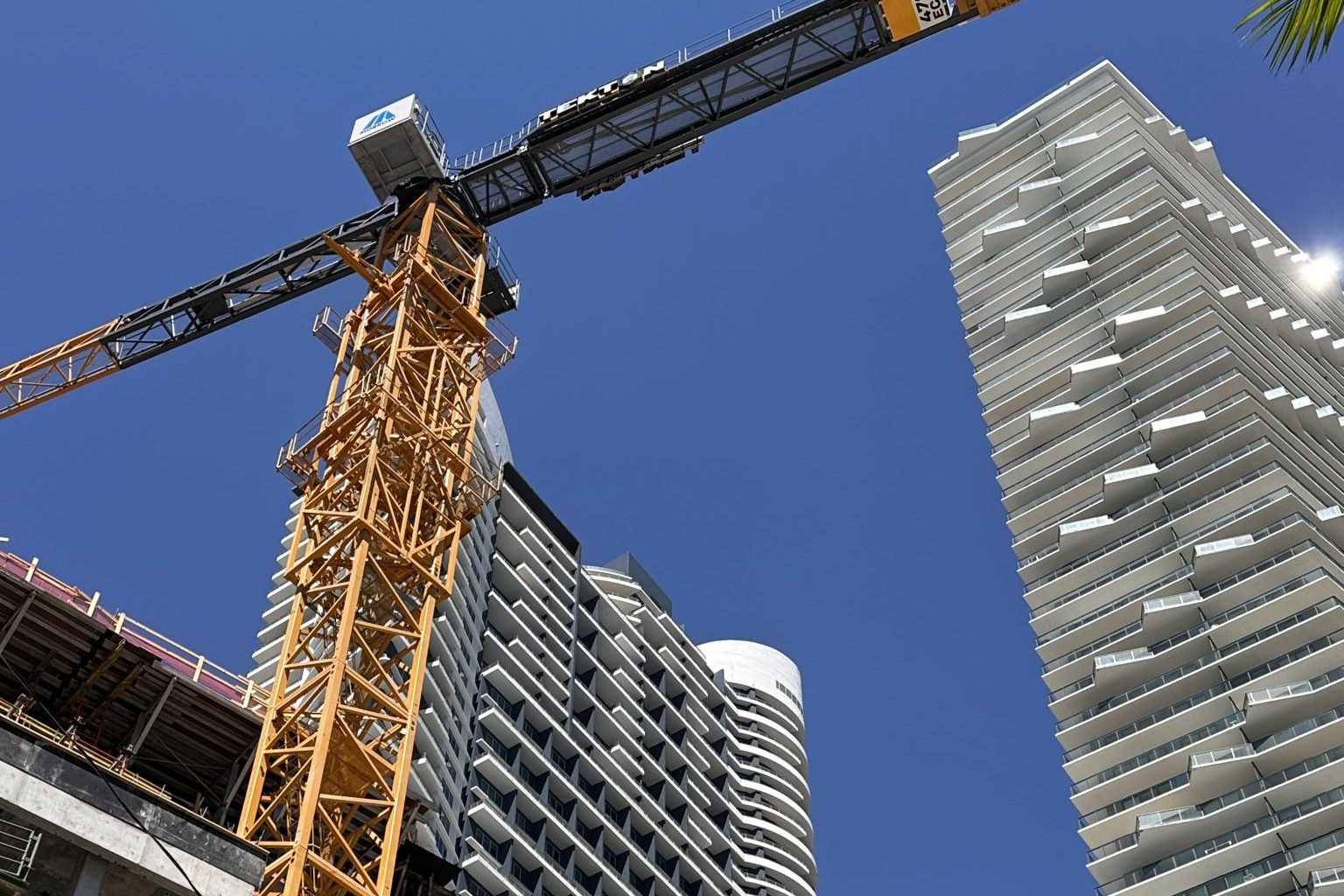Adjustable rate mortgages (ARMs) stand out as a flexible home loan option for many prospective homebuyers as well as current homeowners looking to refinance. But how does an ARM mortgage work? This guide delves into the mechanics of ARMs, offering a clear understanding of their structure and potential benefits.
How does an ARM mortgage work? A brief overview
ARMs (referred to interchangeably as “adjustable rate mortgages,” “annual rate mortgages,” or “variable rate mortgages”) offer a unique approach to home financing, distinguished by their variable interest rates.
Unlike fixed interest rate mortgages, where the interest rate remains constant throughout the entire loan term, ARMs start with an initial fixed-rate period followed by periodic adjustments. This initial period can vary in length, typically ranging from 1 to 10 years, offering a lower interest rate compared to standard fixed-rate mortgages.
You might wonder what a “5/1” ARM means compared to a “10/6” ARM, etc.
- The first number refers to the length of the initial period when the rate is fixed.
- The second number refers to the frequency of the subsequent adjustments.
Therefore, a 5/1 ARM means the rate for the first 5 years is fixed and then may adjust every 1 year thereafter. A 10/6 ARM means the rate is fixed for 10 years and then may adjust every 6 months thereafter.
The appeal of an ARM lies in its initial lower rate, which translates to smaller monthly mortgage payments at the beginning of the loan. However, after this fixed-rate period, the interest rate adjusts at predetermined intervals, based on a financial index plus a set margin. These adjustments reflect market trends, meaning your interest rate can either increase or decrease, subsequently affecting your monthly payments.
Understanding these fluctuations is key to determining if an ARM is the right choice for you. It offers potential savings during the initial period but requires readiness for varying payments in the future.
This mortgage type is particularly advantageous for those who plan to sell or refinance their home before the end of the fixed-rate period, or who anticipate a future increase in income.
In the following sections, we’ll explore the specific requirements of ARM loans, how rate changes are determined, and the various types of ARMs available, providing you with a comprehensive understanding of these dynamic mortgage options.
ARM loan requirements
When considering if an ARM may be right for you, it’s essential to understand the specific requirements. These elements determine not only your initial rate and payments but also how they might change over time. Here, we break down the key ARM requirements.
ARM qualifying rate
When considering an ARM, an important factor to understand is the ARM qualifying rate. This rate is crucial in determining your eligibility for the loan and the affordability of the mortgage over its term.
The ARM qualifying rate is the interest rate that lenders use to assess your ability to repay the loan. Unlike fixed-rate mortgages, where the qualifying rate is constant, the ARM qualifying rate can be higher than the initial rate of the ARM. This is because lenders want to ensure that borrowers can handle potential increases in the interest rate after the initial fixed-rate period.
For instance, if you’re applying for a 5/1 ARM with an initial rate of 7%, the lender might calculate your ability to repay the loan at a higher rate, say 9%, to account for possible rate increases in the future. This means that your income and debts will be evaluated to ensure you can afford the mortgage payments even if the interest rate rises to this higher level.
Understanding the ARM qualifying rate is essential for two reasons.
- First, it impacts your loan approval chances – you need to qualify at this rate, not just the initial lower rate.
- Second, it helps you realistically assess the long-term affordability of the ARM. If you’re stretching your budget to qualify at the higher rate, it might indicate that an ARM poses a financial risk for you.
In the next section, we will delve into the intricacies of interest rate changes in ARMs, further exploring how these changes can impact your mortgage over time.
Initial interest rate
The initial interest rate of an ARM is often lower than that of a fixed-rate loan, making it an attractive option for many borrowers. This mortgage rate is fixed for a predetermined period, typically 1, 3, 5, 7, or 10 years. The length of this period affects the overall risk and potential savings of the ARM, as a longer fixed-rate period provides more stability.
Adjustment periods
The frequency of rate adjustments is a critical aspect of an ARM. After the initial fixed-rate period, the interest rate will adjust at regular intervals, typically every 6 months or 1 year. These intervals are predefined in your loan agreement and can significantly impact your payments.
Calculating the variable interest rates
The most distinctive feature of an ARM is it has an interest rate that changes. After the initial fixed-rate period, your interest rate will adjust based on a benchmark index. This adjustment is typically annual, but it can vary depending on your loan terms. It’s crucial to know how often your rate will change and what index will be used.
The formula to calculate your new interest rate when it’s time for the adjustments is:
New Interest Rate = Benchmark Index + Margin
The benchmark index is an interest rate that reflects general market conditions. The index changes based on the market. The lender predetermines which index your loan will use when you apply for the loan, and this choice generally won’t change after closing.
The Secured Overnight Financing Rate (SOFR) replaced the London Interbank Offered Rate (LIBOR) as the common benchmark index.
The margin is the number of percentage points that the lender adds to the benchmark index to determine the ARM’s new interest rate.
For example, if the SOFR is 5% when it’s time for your interest rate to adjust, and the margin is at 2.75%, your new interest rate would be 7.75%, subject to any rate caps, see more on that below.
Rate caps on ARMs
The notion that your rate can change to an unknown number can be daunting. However, to protect borrowers from extreme fluctuations in interest rates, ARMs have rate caps.
These caps limit how much the interest rate can increase both at each adjustment period and over the life of the loan. Understanding these caps is vital as they provide a measure of security, ensuring that rate increases stay within manageable limits.
Three interest caps provide homeowners with protection against increases in the interest rate:
- Initial Interest Rate Adjustment Cap: This cap sets a limit on the increase in your interest rate after the initial fixed-rate period ends. Typically, the initial adjustment cap is 2% or 5% depending on how long the initial fixed-rate period is. For example, for a 5/1 ARM, it is typical to see a 2% initial adjustment cap, meaning your interest rate cannot increase more than 2% for the first adjustment.
- Subsequent Interest Rate Adjustment Cap: This cap dictates the maximum amount your interest rate can go up each time it adjusts. For example, most lenders typically set this cap at 1%, meaning your interest rate cannot go up more than 1% compared to the previous period’s rate.
- Lifetime Interest Rate Adjustment Cap: This cap places an absolute ceiling on how high your interest rate can ever go during the entire loan term. Regardless of how much the benchmark index rises, your ARM rate will not exceed the lifetime rate cap. As just one example, some lenders may set this cap at 5%, meaning your interest rate can never exceed more than the initial rate + 5%.
These caps are essential for protecting borrowers from extreme interest rate hikes and should be carefully considered when evaluating ARM options.
Interest rate floor for ARMs
The rate caps discussed above sit on one side of the spectrum. On the other side of the spectrum, are rate floors.
Just like its name implies, an interest rate floor is the lowest your interest rate can ever go during the adjustment periods. As the rate caps protect the borrower, the rate floors protect the lender.
For example, if your rate floor is 3%, the lowest your interest rate can ever go is 3%, even if the benchmark index plus the margin ends up falling below 3%.
In the next section, we will delve into the different types of adjustable-rate mortgages, helping you understand the options available and how they might suit your financial goals.
Types of adjustable rate mortgages
There are different types of ARMs, each with its unique structure and benefits. Understanding these different types can help you choose the one that best aligns with your financial situation and goals. Here, we explore some of the common types of ARMs.
Hybrid ARMs
The hybrid ARM is the most common type, and is the type we’ve been discussing thus far in this article. It starts with a fixed-rate period and then adjusts at set periods thereafter.
As mentioned above, you’ll see two numbers (e.g., the popular 5/1 ARM):
- First number: The number of years you’ll pay the initial, fixed rate (e.g., 5 years)
- Second number: How often the interest rates will adjust, in months or years (e.g., 1 year).
Therefore, a 5/1 ARM means the interest rate for the first 5 years is fixed, and after that, it can adjust once a year. The hybrid ARM is ideal for those who plan on moving or refinancing before the end of the initial fixed-rate period.
Interest-Only ARMs
Interest-only ARMs are mortgages where the borrower pays only the interest for the first few months or years of the loan. To be clear, the payments do not include paying down the principal.
Once the interest period is finished, the borrower will start making principal and interest payments.
While the borrower can pay low monthly payments during the interest-only period, no equity is built in their home unless their home greatly appreciates in value.
An interest-only ARM can make sense if you expect a significant increase in income in the future.
Payment-Option ARMs
A payment option ARM gives borrowers the flexibility on how they want to pay their mortgage. You can pick options like:
- Interest-only payments
- Any payment that’s at least as much as the minimum required
- 15, 30, or 40-year loan term
The flexibility can be advantageous, but a payment-option ARM could lead to negative amortization. This happens when your loan balance increases because the amount you pay isn’t enough to cover the interest. If the balance balloons excessively, your lender might reset the loan, demanding much larger and possibly unmanageable payments.
Each type of ARM has its nuances and implications for your financial planning. Explore non-QM loans in Florida more. In the following sections, we’ll address common questions about ARMs, such as the possibility of early payoff and the considerations to keep in mind when opting for this mortgage type.
Can you pay off an ARM mortgage early?
A common question among borrowers considering an ARM is whether they can pay off their ARM early. The answer is generally yes, but there are important considerations to keep in mind. Let’s explore this aspect further.
Paying off a 5/1 ARM in 5 Years
Many wonder, “Can you pay off a 5/1 ARM early?” The short answer is yes. If you have a 5/1 ARM, you can choose to pay off the loan during the initial five-year fixed-rate period, or at any point thereafter. Doing so can save you from the uncertainty of rate adjustments that occur after the fixed period. However, it’s essential to check for any prepayment penalties in your loan agreement.
ARM prepayment penalty examined
A prepayment penalty is a fee charged by the lender if you pay off your loan early, typically within the first few years. The fee is designed to recoup some of the opportunity cost to the lender, i.e., the money they would have earned if the mortgage continued.
Many borrowers wonder, “Do ARMs have a prepayment penalty?” The answer depends.
Usually, for owner-occupied homes, most states forbid any prepayment penalties. On the other hand, for investment properties, prepayment penalties are typical, but you may be able to choose a shorter prepayment penalty period (e.g., 1 year instead of 5 years) in exchange for a higher interest rate.
If your loan does have a prepayment penalty, the calculation of the prepayment penalty varies. For example, a typical prepayment penalty equals 6 months of interest on the amount of the prepayment that exceeds 20% of the original principal balance.
In the next sections, we will delve deeper into the factors to consider when choosing an ARM, such as rate increase risks, the comparison between variable and fixed rates, and more. This information will help you make a well-informed decision about whether an ARM is right for you and how to manage it effectively.
Factors to Consider with ARM Mortgages
When contemplating an ARM, it’s crucial to weigh the following factors.
Rate increase risks
One of the primary considerations with an ARM is the risk the rate can adjust significantly. After the initial fixed-rate period, the interest rate can fluctuate, potentially leading to both a higher interest rate and monthly payments.
As mentioned above, your new interest rate is calculated by using the following formula: benchmark index + margin.
Also, as discussed above, it is also important to familiarize yourself with the rate caps (initial, subsequent, and lifetime caps) to understand your maximum exposure.
Assessing your financial flexibility to handle potential increases is vital. Consider future income stability and other financial obligations that might impact your ability to manage higher payments.
Variable rate vs fixed rate
Comparing ARMs with fixed-rate mortgages is essential in making an informed decision. While ARMs typically offer lower initial rates, fixed-rate mortgages provide one stable rate for the life of the entire loan. Your choice should align with your financial plans, risk tolerance, and the length of time you intend to stay in your home.
Index rate and margin
Understanding the index rate and margin is crucial in an ARM. The index rate is a benchmark interest rate that fluctuates with market conditions, and the margin is an additional percentage that lenders add to the index rate. Together, they determine your mortgage’s adjusted rate. Familiarize yourself with the specific index and margin for your ARM, as they directly affect your future payments.
In 2023, the SOFR index replaced the LIBOR index for ARMs. It is widely accepted that the SOFR is more stable and reliable than the LIBOR. According to many experts, the SOFR index is a much more resilient rate than the LIBOR index because of how it is produced and the depth and liquidity of the markets that underlie it.
Understanding the rate change frequency
The frequency of rate adjustments in an ARM can significantly impact your financial planning. Some ARMs adjust annually, while others might have different adjustment periods such as 6 months. Knowing when and how often your rate will change is essential for budgeting and long-term financial planning.
Initial rate period and introductory rate
The initial rate period, or the introductory rate period, is the timeframe during which the interest rate remains fixed in an ARM. This period varies among different ARMs and can range from one year to several years. Consider how long you plan to stay in your home and your financial goals when choosing an ARM with a specific initial rate period.
In the next section, we will highlight why choosing DAK Mortgage for your ARM can be a beneficial decision, focusing on our expertise and services tailored to your needs.
Why DAK Mortgage for your ARM
Choosing the right mortgage broker is as crucial as selecting the right type of loan. At DAK Mortgage, we pride ourselves on offering expert guidance and personalized services to help you navigate the complexities of ARMs and all your alternative mortgage needs.
Whether it’s finding the non-traditional mortgage lenders in Florida offering the best ARM terms, understanding rate adjustments, considering refinancing options, or simply answering your questions about the pros and cons, we’re here to assist you every step of the way.
Final points and key takeaways
Let’s recap the key points and takeaways to assist you in making an informed decision about whether an ARM is the right choice for your mortgage needs.
- Understanding ARM Basics: ARMs start with a lower initial interest rate that adjusts over time based on market conditions. This initial period offers potential savings but requires readiness for future rate changes.
- Evaluating ARM Loan Requirements: Familiarize yourself with the specifics of interest rate changes, rate caps, and the initial interest rate. Understanding these elements is crucial in assessing the suitability of an ARM for your financial situation.
- Choosing the Right ARM Type: From hybrid ARMs to interest-only and payment-option ARMs, each type has its unique features and benefits. Consider your long-term financial goals and how long you plan to stay in your home when selecting an ARM type.
- Considering Early Payoff and Prepayment Penalties: While you can generally pay off an ARM early, be aware of any prepayment penalties that might apply. Weigh the benefits of early payoff against potential penalties and your financial strategy.
- Weighing Key Factors: Rate increase risks, the comparison between variable and fixed rates, and understanding the index rate and margin are essential factors to consider. These will impact your payments and overall financial planning.
ARMs can be a beneficial mortgage option for many, offering initial lower rates and flexibility. However, they require a clear understanding of their structure and potential future changes.
At DAK Mortgage, we are committed to helping you navigate these complexities, ensuring you make a choice that aligns with your financial goals and circumstances.
FAQs
Is it a good idea to get an ARM mortgage?
It depends on your financial situation and goals. ARMs can be a good choice if you plan to move or refinance before the rate adjusts, or if you anticipate a higher future income. They offer lower initial rates, but the uncertainty of future rate changes needs to be considered.
What is the disadvantage of an ARM mortgage?
The primary disadvantage of an ARM is the potential for interest rate increases after the initial fixed-rate period. This can lead to higher monthly payments and uncertainty in budgeting, especially if market rates rise significantly. However, most ARMs come with rate caps to limit your exposure to rate hikes.
Why would someone want an ARM mortgage?
Individuals might choose an ARM for the lower initial interest rates, which can make homeownership more accessible in the short term. It’s also appealing for those who don’t plan to stay in their home long-term or expect their income to increase in the future.
What happens after a 5-year ARM expires?
After the initial 5-year fixed-rate period expires, the interest rate will start adjusting at predetermined intervals, typically every 6 months or 1 year. The new rate is calculated based on a specific index (usually SOFR) plus a set margin, and it can either increase or decrease, depending on market conditions.










